We sometimes get requests from customers for us to quote on a printed circuit board (PCB) fabrication (bare board) where they do not have much (or any) documentation. These are usually older products where the original design was not well documented or where the supporting documentation simply cannot be located. Often the customer will have only a sample or photos of the existing board.
If you send out an RFQ for a bare board fab without having a good documentation package, your PCB vendors will likely respond seeking additional information to be able to accurately quote and fabricate your boards. I mean, it is only logical, right? You cannot accurately quote what you don’t understand.
One of the items they will ask about is a Fab Drawing. Why are they asking for this? What does a fab drawing communicate?
Fab drawings contain four distinct sections that communicate a lot of information to a PCB vendor:
1. 2D Illustration
This shows the board outline with dimensions. It depicts cutouts and special areas as well as radii. This 2D illustration has an origin point marked as 0,0 that also ties to the drill data. Speaking of drill data, the illustration also depicts the drill locations with symbols that tie to the Drill Data section of the fab drawing that we discuss next.
2. Drill Data
How many drill holes are required and what are their various diameters? That is what this section of the drawing details. Various columns and rows of data communicate a symbol, diameter, hole tolerance, quantity, etc.
Again, this data is very helpful to quoters to determine pricing.
3. Cross-Section
Given that many circuit boards are multi-layer, it is critical to undertand the layers and their composition. A cross-section of the board conveys this information. Is this a 2-layer, 6-layer, or a 64-layer board? Obviously a 64-layer board is going to be a lot more expensive than a 2-layer board.
This part of the fab drawing indicates not only the overall thickness of the board, but also the thickness of each layer as well as other critical information.
4. Fab Notes
The notes section is also very important. This is where critical information about the substrate material is defined. Is it standard FR4 or something more exotic? What is the surface finish (ENIG, HASL, etc.)? Is the board to be ROHS-compliant? What about edge connectors?
What if I Don’t Have a Fab Drawing?
While it is possible to communicate the required information in a less efficient way than a fab drawing, the resulting quote will tend to be more budgetary.
You could hire an engineering firm to create one for you based on your sample and other known information. We know good electrical engineers who do this type of work on a contract basis. They can also evaluate the components that will be mounted on the board to look for cost savings and other efficiencies.
Please let us know if you have any questions about fab drawings or anything else related to circuit board fabrication.
